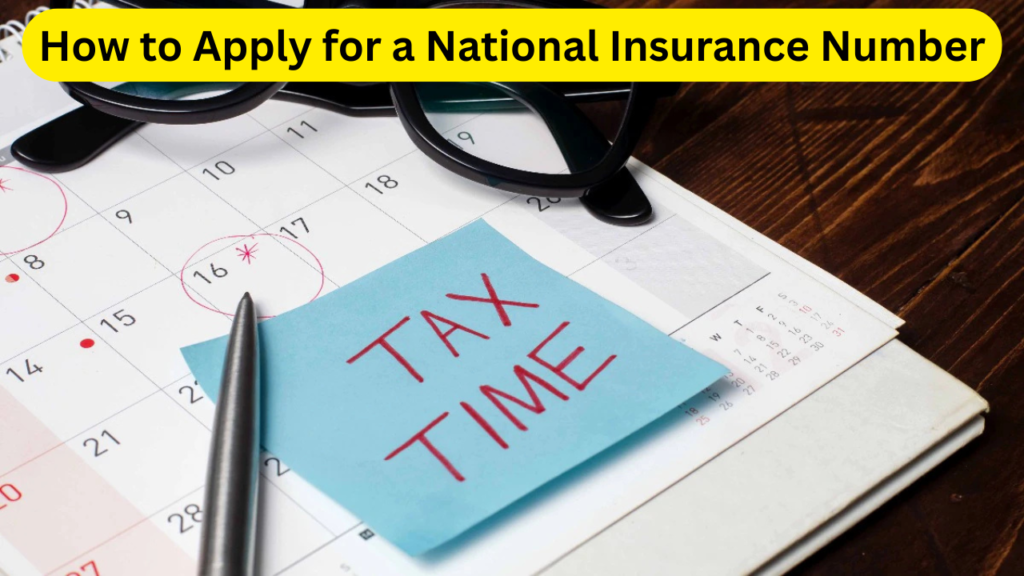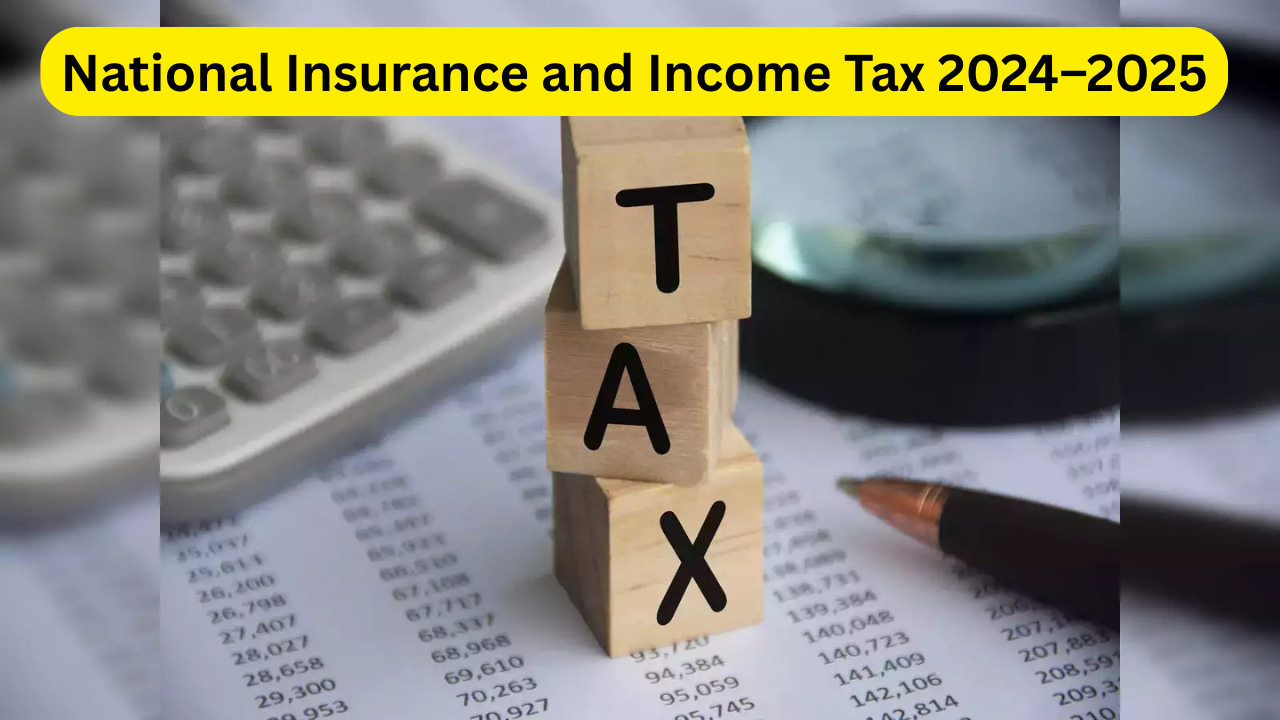National Insurance and Income Tax 2024–2025: The financial year 2024–2025 has brought some major updates to the UK’s tax landscape, especially around National Insurance (NI) and income tax. While the government has reduced the employee NI contributions, a freeze in income tax thresholds means many individuals will see their overall tax burden increase. These subtle but significant changes are impacting employees, employers, and the self-employed alike.
One of the most notable changes is the increase in employer National Insurance contributions, which rose from 13.8% to 15% for salaries over £5,000 starting 6 April 2025. At the same time, employees are enjoying reduced NI rates, with the main employee contribution falling to just 8%, down from 12% a year ago. However, these tax cuts are offset by the government’s decision to freeze income tax thresholds, meaning wage growth could push more individuals into higher tax brackets — a phenomenon known as “fiscal drag.”
These developments could be confusing for many workers, small business owners, and the self-employed. Understanding how these changes affect your income, what you’re eligible for, and how to make the most of the benefits available is crucial. In this detailed guide, we’ll break down who can apply, how much insurance you pay, how to apply, and key dates and links that matter most.
What is National Insurance and How Does it Work?
Definition and Purpose
National Insurance (NI) is a mandatory contribution paid by employees, employers, and the self-employed in the UK. The money collected is used to fund state benefits like the State Pension, NHS, maternity pay, unemployment benefits, and more.
Types of NI Contributions
There are several classes of National Insurance:
- Class 1: Paid by employees and employers.
- Class 2 & 4: Paid by the self-employed.
- Class 3: Voluntary contributions to fill gaps in your record.
Who Can Apply for National Insurance?
To apply for or pay National Insurance, you must:
- Be 16 years old or older
- Be employed, self-employed, or earning above the threshold
- Be a UK resident or a worker legally allowed to work in the UK
You’ll automatically get a National Insurance Number (NINo) before your 16th birthday if you’re a UK citizen. If not, you can apply through the government website or HMRC.
Also read: LIC Rejects USTR Claims of Unfair Advantage in Indian Insurance Market
How Much National Insurance Do You Pay?
For Employees
- You start paying NI at 8% if you earn more than £242 a week
- Income above £50,270 per year is charged 2%
For Employers
- Employers now pay 15% NI on salaries over £5,000 per year
- The employment allowance has been raised from £5,000 to £10,500
For the Self-Employed
- Class 2: Abolished from April 2024
- Class 4: 6% on income between £12,570 and £50,270, 2% above that
| Category | Contribution Rate | Income Threshold |
|---|---|---|
| Employee (Main) | 8% | £242/week to £50,270/year |
| Employee (Additional) | 2% | Above £50,270/year |
| Employer | 15% | Above £5,000/year |
| Self-Employed | 6% (Class 4) | £12,570 to £50,270/year |
How to Use NI to Your Benefit
Understanding your NI record can help you:
- Qualify for the full State Pension
- Access maternity/paternity leave benefits
- Be eligible for Jobseeker’s Allowance or Universal Credit
- Claim other social security benefits
You can check your National Insurance record online via your HMRC personal tax account. This will show your contributions, any gaps, and what you need to do to fill them.
How to Apply for a National Insurance Number

If you don’t have a NINo, here’s how you can get one:
Step-by-Step Application Process
- Go to GOV.UK and search for “Apply for a National Insurance Number”
- Create or sign in to your GOV.UK Verify account
- Submit documents proving your identity and eligibility to work
- Receive your NINo by post within 4-8 weeks
Important Dates for 2024–2025
| Event | Date |
|---|---|
| Employer NI rate increase to 15% | 6 April 2025 |
| NI rate cuts for employees | Jan & April 2024 |
| End of Class 2 contributions (Self-Employed) | April 2024 |
| Tax threshold freeze ends (planned) | April 2028 |
Disclaimer
Check NI Record – GOV.UK This article is intended for informational purposes only. Tax policies are subject to change based on government decisions. For personalized advice, always consult with a certified tax advisor or contact HMRC directly.
National Insurance and Income Tax Conclusion
The changes to National Insurance and income tax rates in 2024–2025 are a mixed bag for UK residents. While many workers are enjoying lower NI contributions, the freezing of thresholds means that some of that relief is being silently clawed back through fiscal drag. It is essential for workers and employers alike to stay informed and updated.
If you’re employed, make sure your payroll accurately reflects the new 8% NI rate. If you’re an employer, budgeting for the 15% NI cost is vital. Self-employed individuals need to update their financial plans based on the scrapping of Class 2 NI and the new Class 4 rates.
With careful planning and regular checks of your NI and tax records, you can stay ahead, avoid penalties, and even maximize your eligibility for future benefits. Keep track of changes in personal allowances and thresholds — and take full advantage of your online HMRC account to track everything in one place.
In a time of rising living costs and uncertain economic conditions, knowing where your money goes — and why — empowers you to make better decisions, both now and for your future financial security.
National Insurance and Income Tax FAQs
1. Why did my National Insurance contributions change in 2024–2025?
The UK government reduced the employee NI rate to 8% to boost post-COVID earnings and improve work incentives. However, the thresholds were frozen, meaning many people still pay more overall as wages increase.
2. What is the new employer NI rate, and how does it affect my business?
From 6 April 2025, employers must pay 15% in NI on employee salaries over £5,000/year. This may increase costs for businesses but is offset partially by a higher Employment Allowance of £10,500.
3. Do I need to pay National Insurance if I’m self-employed?
Yes, self-employed people must pay Class 4 NI at 6% on profits between £12,570 and £50,270, and 2% on anything above that. However, Class 2 NI was abolished in 2024, simplifying the process.
4. What happens if I don’t have a National Insurance Number?
You must apply for one if you plan to work, claim benefits, or contribute to the UK’s social welfare system. You can apply online through GOV.UK, and it typically takes 4–8 weeks to receive your NI number.
5. How does the tax threshold freeze affect me in the long run?
Since thresholds remain fixed till 2028, even small salary increases can push you into a higher tax bracket, leading to “stealth tax increases”. It’s essential to check how this impacts your net income and pension contributions over time.




One thought on “National Insurance and Income Tax 2024–2025: What Has Changed and How It Affects You”